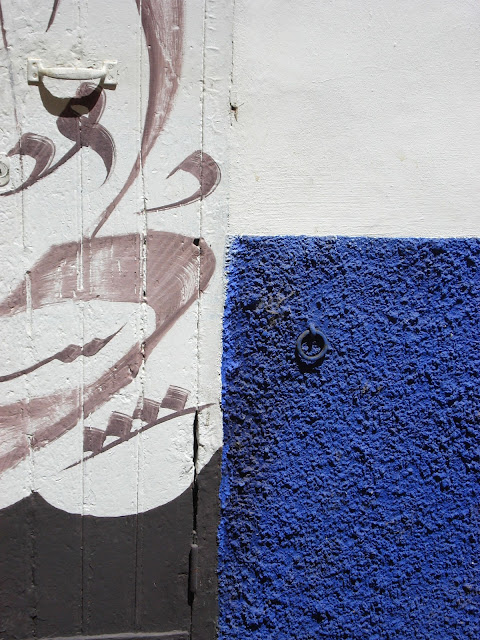From Tangier one can travel by car, train or plane to other parts of Morroco. There are pros and cons to each mode of transportation.
Cars are easy to rent, take you anywhere, at any time and give you the possibility to change course and schedule when you wish. However, driving in Morocco is not for the fainthearted. Traffic laws are very loosely interpreted, donkey-drawn carts appear out of nowhere and some people missed the course about which side of the road to drive on and what a stop sign means.
Trains are actually a good option because they are usually on time, clean and quite safe but you are bound by timetables or as happened to us once, by flooding or other problems on the tracks. An overnight trip in a two bed berth from Tangier to Marrakech cost us about 60 dollars/45 euros, had clean sheets, pillows and blankets, a sink and mirror and was very comfortable.
Domestic flights are unpredictable but do get you there eventually. We once spent six hours at Casablanca airport waiting for a connection which was supposed to leave within 45 minutes. There was not a soul to get information from in the transit area, a blank screen for time of departure, no possibility to buy food or drink and the flight was announced suddenly through a loud-speaker just minutes before departure. No explanation, just hurry, hurry or you'll miss it. Huh...I'm sorry?
Whatever the means of travel or the inconvenience, there is true beauty in every corner of Morocco. People are extremely friendly and ready to help in any way they can and after all, the unexpected is what makes travelling fun.
A man carries supplies up the hill from the holy city of Moulay Idriss which boasts the oldest Mosque and University in Morocco and possibly the world. Until 2005, foreigners were asked to leave the city by 3:00 PM.
A "pisé" village (an adobe-like mix of clay and straw) in the south on the way to the desert south east of Marrakech.
An oasis with minaret on the banks of an almost dry river near Ouarzazate.
A young tuareg camel rider at Erg Chigaga. He guides tourists who teeter unsteadily atop bored camels to "experience the nomad life"...for all of thirty minutes. Dare I admit it, I was one of them.
Cars are easy to rent, take you anywhere, at any time and give you the possibility to change course and schedule when you wish. However, driving in Morocco is not for the fainthearted. Traffic laws are very loosely interpreted, donkey-drawn carts appear out of nowhere and some people missed the course about which side of the road to drive on and what a stop sign means.
Trains are actually a good option because they are usually on time, clean and quite safe but you are bound by timetables or as happened to us once, by flooding or other problems on the tracks. An overnight trip in a two bed berth from Tangier to Marrakech cost us about 60 dollars/45 euros, had clean sheets, pillows and blankets, a sink and mirror and was very comfortable.
Domestic flights are unpredictable but do get you there eventually. We once spent six hours at Casablanca airport waiting for a connection which was supposed to leave within 45 minutes. There was not a soul to get information from in the transit area, a blank screen for time of departure, no possibility to buy food or drink and the flight was announced suddenly through a loud-speaker just minutes before departure. No explanation, just hurry, hurry or you'll miss it. Huh...I'm sorry?
Whatever the means of travel or the inconvenience, there is true beauty in every corner of Morocco. People are extremely friendly and ready to help in any way they can and after all, the unexpected is what makes travelling fun.
A lake basks in the sun amid manicured fields and geometrically planted olive groves.
Lush springtime vegetation at the foot of the Rif mountains.
Storks take in the view of the Roman ruins in Volubilis from their perch on a centuries old column.
A man carries supplies up the hill from the holy city of Moulay Idriss which boasts the oldest Mosque and University in Morocco and possibly the world. Until 2005, foreigners were asked to leave the city by 3:00 PM.
Mauve flowers adorn a dry river bed in the south on route to the dunes of Erg Chigaga.
A "pisé" village (an adobe-like mix of clay and straw) in the south on the way to the desert south east of Marrakech.
An oasis with minaret on the banks of an almost dry river near Ouarzazate.
A young tuareg camel rider at Erg Chigaga. He guides tourists who teeter unsteadily atop bored camels to "experience the nomad life"...for all of thirty minutes. Dare I admit it, I was one of them.
Photos: Joelle Desparmet

















































